Making Spun Dubbing Bodies & Using High Vis Dubbing Palette
Posted: Sun Sep 11, 2016 2:59 pm
I spent the morning playing around making Leisenring spun silk dubbing bodies for the new imitative fly swap. I thought this might make a nice little tutorial, documenting how I make the bodies and showing a new tool (high contrast dubbing palette - visualization aid to make it easier for my nearsightedness).
The following attachment contains photos showing the process and the new tool. Hopefully the photos are self explanatory.
DOWNLOAD AND OPEN THIS FILE: I have been struggling with posting photos from Google's Photo+ website. I've shared the album and posted links to the photos, but the did not work. I got laze and created a PDF document with all the images.
Basically I wanted to show the new tool I created to make it easier to see what I was doing when making dubbed bodies with two different dubbings. I made a little palette out of heavy water color paper. I cut the pallet in a curved shape, which fit nicely in my left hand. I then cut the adhesive strip from a small Post-It note. Fold the strip in half lengthwise, with the sticky side facing outwards. The strip with have sticky side facing up and downwards. Stick the strip onto the palette and then place a small bunch on either side of where you place you thumb.
The white watercolor paper forms a high contrast background, making it easy to see the dubbing fibers so you can judge how much your pulling off the ball of dubbing. I am very near sighted, and this makes it easier for me to see what I am doing.
The rest of the process is very straight forward. Just look at the pics and you will be able to figure out the process steps.
PHOTO TUTORIAL:

I take a PostIT note and cut off the small strip with the adhesive back. Fold the strip in half, length wise with the sticky part facing outwards on both sides. The sticky part will help hold the dubing in place, when you set the palette down between tying steps. Press the PostIT note strip to the center of the white thumb palette.
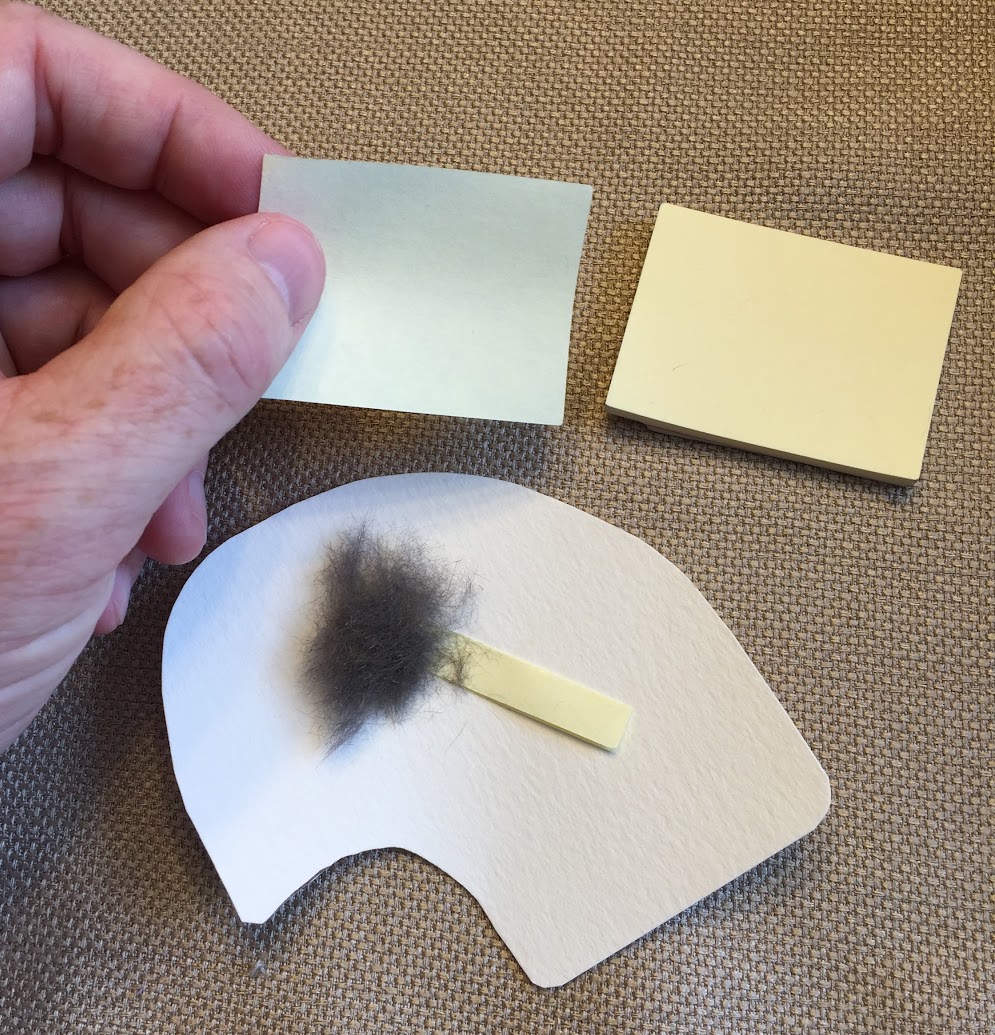



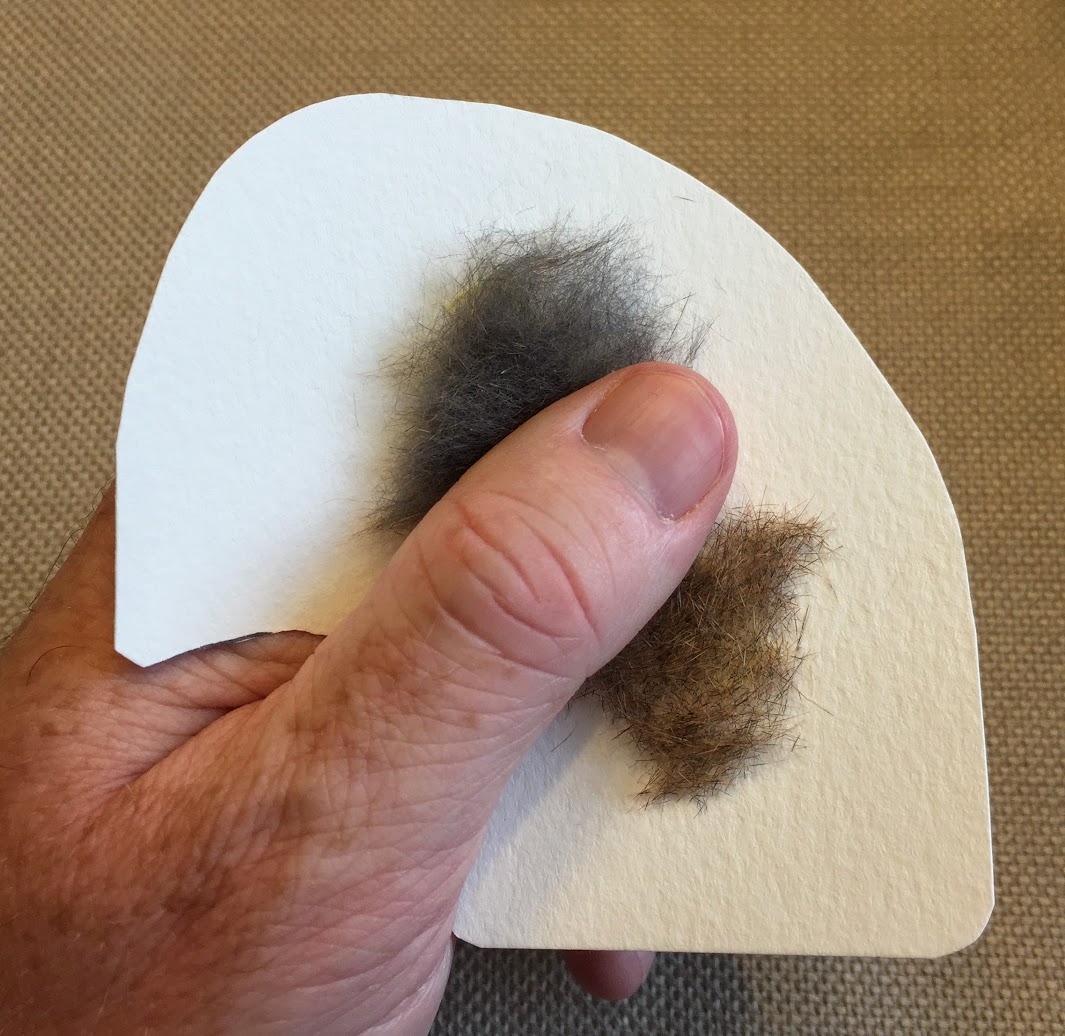
Wind the tying silk around the dubbing block, with your finger along the top edge. Make a dozen loose wraps, then cut all the strands in a single location. You now have 12 uniform pieces of silk, which are used to form spun bodies. I generally like to wax all the strands at the same time, by drawing the strands across a block of wax.


Once the strands of silk have been waxed, you can begin forming the spun bodies. I like to use two parallel blocks, when creating spun bodies. Personally, I find it more efficient to do the steps two at a time.

The rest of the photos are self explanatory (carefully lay down a layer of dubbing above the waxed thread, draw the second strand over the top, and twist together. Finished spun bodies are then stored on cards, for future tying sessions). I demonstrate two methods of spinning the bodies, first by hand (spin silk strands between your thumb and index finger, alternating between hands). The second set of photos shows a little metal tool I prefer for spinning the bodies. The tool keeps your fingers from getting covered in wax, making it easier to handle the dubbing.

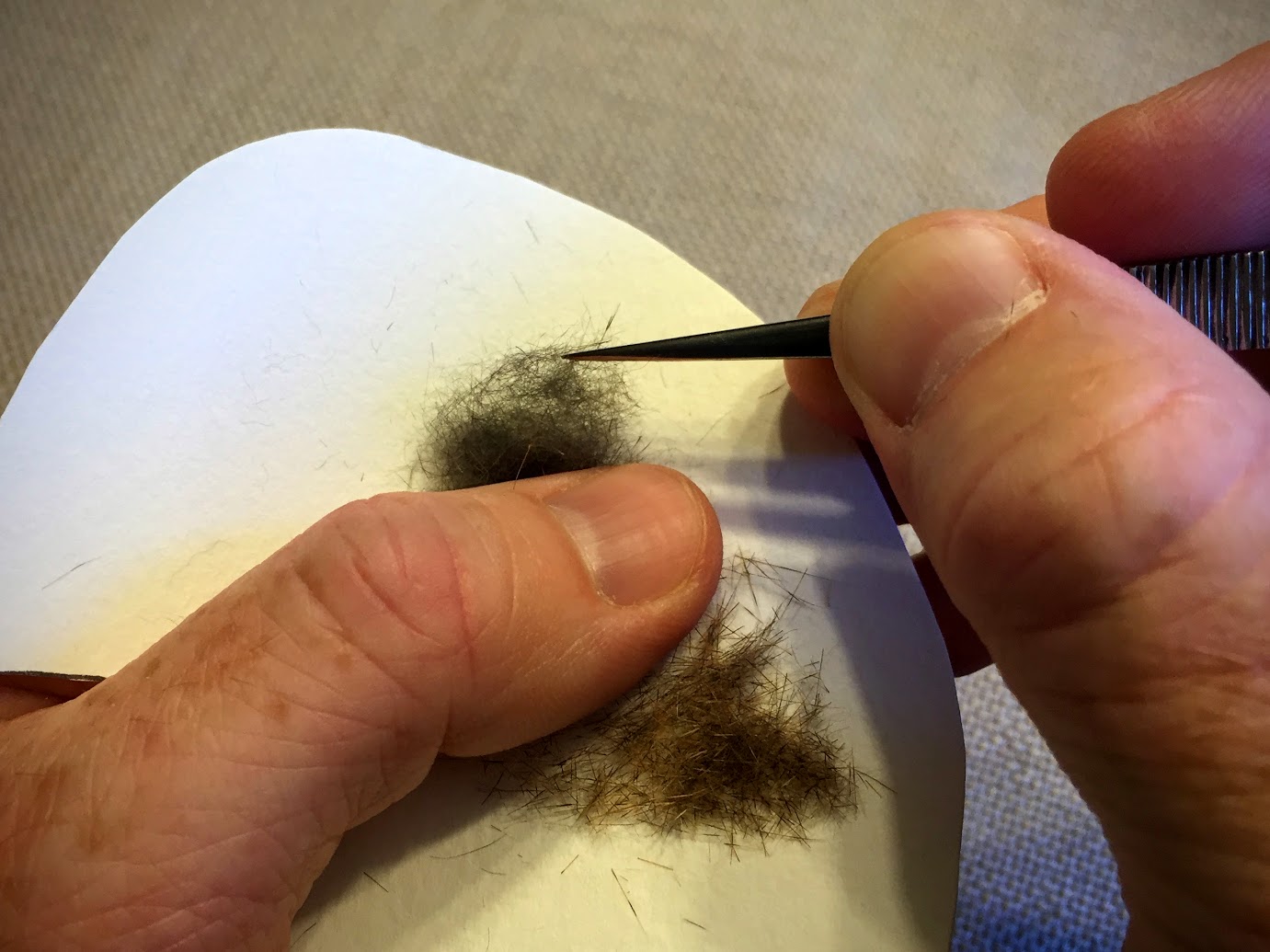




SPINNING BODIES BY HAND (traditional method):

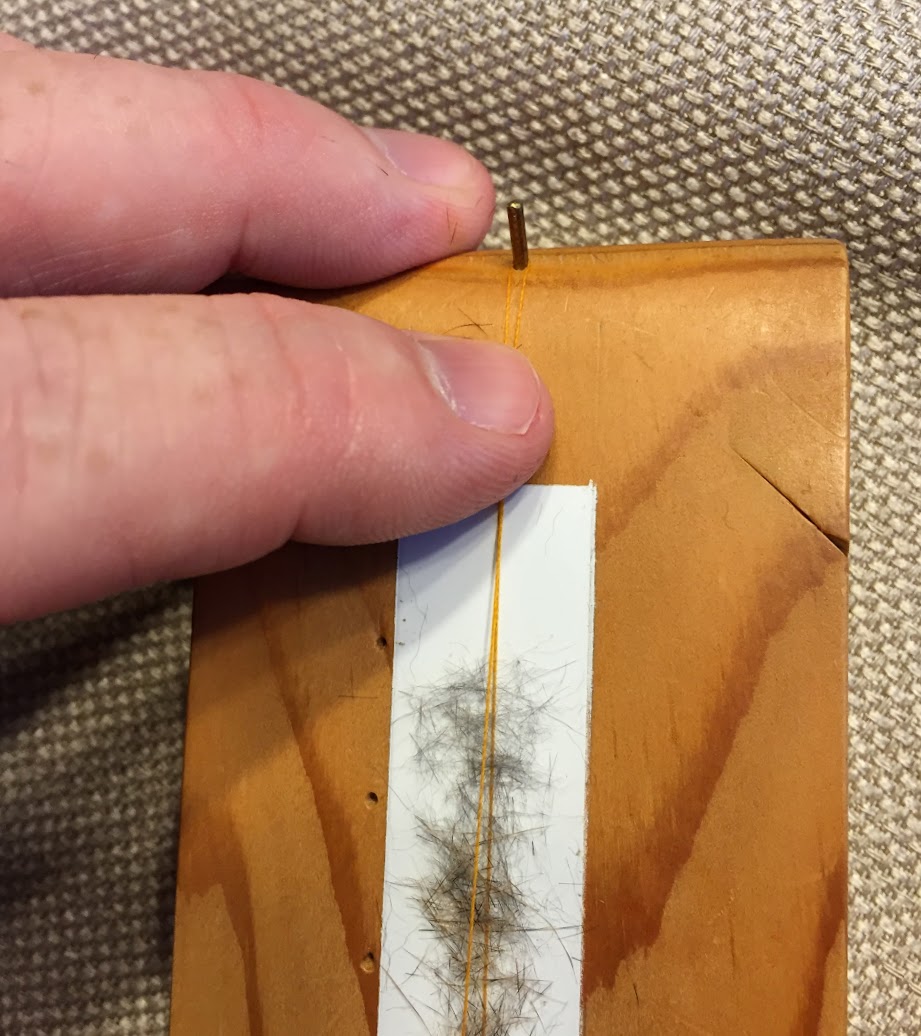
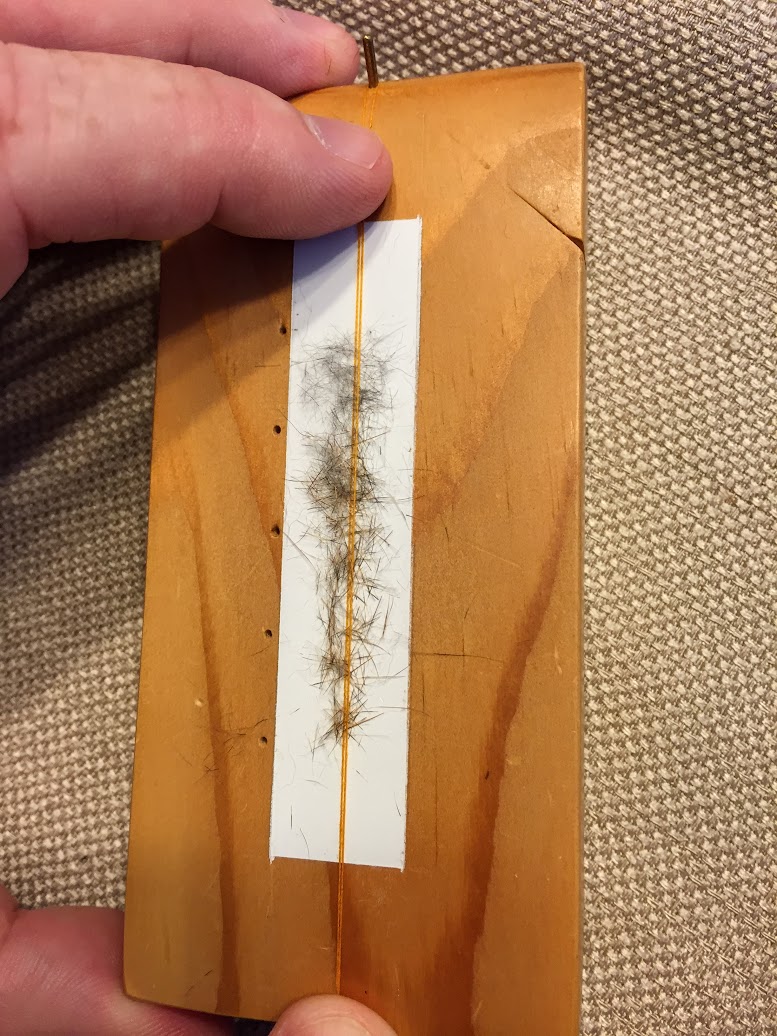




SPINNING BODIES WITH TOOL (my preferred method):





Yours truly, inspecting the spun bodies.

The following attachment contains photos showing the process and the new tool. Hopefully the photos are self explanatory.
DOWNLOAD AND OPEN THIS FILE: I have been struggling with posting photos from Google's Photo+ website. I've shared the album and posted links to the photos, but the did not work. I got laze and created a PDF document with all the images.
Basically I wanted to show the new tool I created to make it easier to see what I was doing when making dubbed bodies with two different dubbings. I made a little palette out of heavy water color paper. I cut the pallet in a curved shape, which fit nicely in my left hand. I then cut the adhesive strip from a small Post-It note. Fold the strip in half lengthwise, with the sticky side facing outwards. The strip with have sticky side facing up and downwards. Stick the strip onto the palette and then place a small bunch on either side of where you place you thumb.
The white watercolor paper forms a high contrast background, making it easy to see the dubbing fibers so you can judge how much your pulling off the ball of dubbing. I am very near sighted, and this makes it easier for me to see what I am doing.
The rest of the process is very straight forward. Just look at the pics and you will be able to figure out the process steps.
PHOTO TUTORIAL:
I take a PostIT note and cut off the small strip with the adhesive back. Fold the strip in half, length wise with the sticky part facing outwards on both sides. The sticky part will help hold the dubing in place, when you set the palette down between tying steps. Press the PostIT note strip to the center of the white thumb palette.
Wind the tying silk around the dubbing block, with your finger along the top edge. Make a dozen loose wraps, then cut all the strands in a single location. You now have 12 uniform pieces of silk, which are used to form spun bodies. I generally like to wax all the strands at the same time, by drawing the strands across a block of wax.
Once the strands of silk have been waxed, you can begin forming the spun bodies. I like to use two parallel blocks, when creating spun bodies. Personally, I find it more efficient to do the steps two at a time.
The rest of the photos are self explanatory (carefully lay down a layer of dubbing above the waxed thread, draw the second strand over the top, and twist together. Finished spun bodies are then stored on cards, for future tying sessions). I demonstrate two methods of spinning the bodies, first by hand (spin silk strands between your thumb and index finger, alternating between hands). The second set of photos shows a little metal tool I prefer for spinning the bodies. The tool keeps your fingers from getting covered in wax, making it easier to handle the dubbing.
SPINNING BODIES BY HAND (traditional method):
SPINNING BODIES WITH TOOL (my preferred method):
Yours truly, inspecting the spun bodies.